三(3-甲氧基苯基)膦,Tris(3-methoxyphenyl)phosphine,≥97.0 %
产品编号:BJHY-Q29949| CAS NO:29949-84-6| MDL NO:MFCD00008386| 分子式:(CH3OC6H4)3P;C21H21O3P| 分子量:352.36
本网站销售的所有产品仅用于工业应用或者科学研究等非医疗目的,不可用于人类或动物的临床诊断或者治疗,非药用,非食用,
| 产品名称 | 三(3-甲氧基苯基)膦 |
|---|---|
| 英文名称 | Tris(3-methoxyphenyl)phosphine,≥97.0 % |
| CAS编号 | 29949-84-6 |
| 产品熔点 | 113-115 °C(lit.) |
| 产品沸点 | 476.3±40.0 °C at 760 mmHg |
| 产品闪点 | 301.7±27.6 °C |
| 精确质量 | 352.122833 |
| PSA | 41.28000 |
| LogP | 5.44 |
| 外观性状 | 白色至近乎于白色结晶粉末 |
| 蒸气压 | 0.0±1.1 mmHg at 25°C |
| 稳定性 | 如果遵照规格使用和储存则不会分解,未有已知危险反应 避免氧化物 |
| 储存条件 | 保持贮藏器密封、储存在阴凉、干燥的地方,确保工作间有良好的通风或排气装置 |
相关文档
化学品安全说明书(MSDS)
下载MSDS质检证书(COA)
相关产品
| 危害码 (欧洲) | Xi: Irritant; |
|---|---|
| 风险声明 (欧洲) | R36/37/38 |
| 安全声明 (欧洲) | S26-S37/39 |
| WGK德国 | 3 |
| 海关编码 | 2931900090 |
|
Section 1: Product Identification Chemical Name:Tris(m-methoxyphenyl)phosphine, 97+% CAS Registry Number:29949-84-6 Formula:(m-CH3OC6H4)3P EINECS Number:none Chemical Family:organophosphine ligand Synonym:Tris(3-methoxyphenyl)phosphine, Tri(m-anisyl)phosphine
Section 2: Composition and Information on Ingredients IngredientCAS NumberPercentACGIH (TWA)OSHA (PEL) Title compound29949-84-6100%no datano data Section 3: Hazards Identification Emergency Overview:Irritating to the respiratory tract, skin and eyes. May be harmful if swallowed. Primary Routes of Exposure:Ingestion, eyes, inhalation Eye Contact:Causes slight to mild irritation of the eyes. Skin Contact:Causes slight to mild irritation of the skin. Inhalation:Irritating to the nose, mucous membranes and respiratory tract. No specific information is available on the physiological effects of ingestion. May cause vomiting and diarrhea. Ingestion: Acute Health Affects:Irritating to skin, eyes and respiratory tract. Chronic Health Affects:No information available on long-term chronic effects. NTP:No IARC:No OSHA:No SECTION 4: First Aid Measures Immediately flush the eyes with copious amounts of water for at least 10-15 minutes. A victim may need Eye Exposure: assistance in keeping their eye lids open. Get immediate medical attention. Wash the affected area with water. Remove contaminated clothes if necessary. Seek medical assistance if Skin Exposure: irritation persists. Remove the victim to fresh air. Closely monitor the victim for signs of respiratory problems, such as difficulty Inhalation: in breathing, coughing, wheezing, or pain. In such cases seek immediate medical assistance. Seek medical attention immediately. Keep the victim calm. Give the victim water (only if conscious). Induce Ingestion: vomiting only if directed by medical personnel. SECTION 5: Fire Fighting Measures Flash Point:none Autoignition Temperature:none Explosion Limits:none Extinguishing Medium:carbon dioxide, dry powder or foam Fire fighters should be equipped with a NIOSH approved positive pressure self-contained breathing apparatus Special Fire Fighting Procedures: and full protective clothing. Hazardous Combustion andIf involved in a fire this material may emit toxic organic fumes. Decomposion Products: Unusual Fire or Explosion Hazards: Fine dust may form flammable mixtures with air. Handle the material in an efficient fume hood. SECTION 6: Accidental Release Measures Spill and Leak Procedures:Small spills can be mixed with vermiculite or sodium carbonate and swept up. SECTION 7: Handling and Storage Handling and Storage:Store in a tightly sealed container. Keep away from heat and direct sunlight. SECTION 8: Exposure Controls and Personal Protection Eye Protection:Always wear approved safety glasses when handling a chemical substance in the laboratory. Skin Protection:Wear protective clothing and gloves. Ventilation:Material may form a fine dust. If possible, handle the material in an efficient fume hood. If ventilation is not available a respirator should be worn. The use of respirators requires a Respirator Respirator: Protection Program to be in compliance with 29 CFR 1910.134. Ventilation:Material may form a fine dust. If possible, handle the material in an efficient fume hood. Additional Protection:No additional protection required. SECTION 9: Physical and Chemical Properties Color and Form:white xtl. Molecular Weight:352.37 Melting Point:115° Boiling Point:no data Vapor Pressure:no data Specific Gravity:no data Odor:none Solubility in Water:insoluble SECTION 10: Stability and Reactivity Stability:air and moisture-stable solid Hazardous Polymerization:none Conditions to Avoid:contact with strong oxidizing agents Incompatibility:strong oxidizing agents, halogens Decomposition Products:carbon dioxide, carbon monoxide, phosphorus pentoxide, and organic fumes. SECTION 11: Toxicological Information No specific information available on this product. Related compounds have been known to affect the nervous RTECS Data:system. Symptoms of nervous system toxicity (by oral or inhalation route) include tremors, altered reflexes, loss of muscle coordination, limb weakness, and convulsions. Carcinogenic Effects:No data available Mutagenic Effects:No data available Tetratogenic Effects:No data available SECTION 12: Ecological Information Ecological Information:No information available SECTION 13: Disposal Considerations Disposal:Dispose of according to local, state and federal regulations. SECTION 14: Transportation Shipping Name (CFR):Non-hazardous Hazard Class (CFR):NA Additional Hazard Class (CFR):NA Packaging Group (CFR):NA UN ID Number (CFR):NA Shipping Name (IATA):Non-hazardous Hazard Class (IATA):NA Additional Hazard Class (IATA):NA Packaging Group (IATA):NA UN ID Number (IATA):NA SECTION 15: Regulatory Information TSCA:not listed on the TSCA inventory SARA (Title 313):not regulated by Title 313 Second Ingredient:none SECTION 16 - ADDITIONAL INFORMATION N/A |
|
~29% 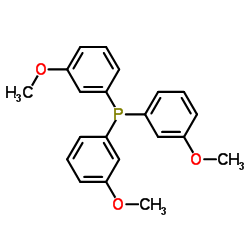
29949-84-6 |
| 文献:Le Gall, Erwan; Ben Aissi, Karima; Lachaise, Isabelle; Troupel, Michel Synlett, 2006 , # 6 p. 954 - 956 |
|
~% 
29949-84-6 |
| 文献:Journal of the Chemical Society, , p. 527,530 |
|
~% 
29949-84-6 |
| 文献:Journal fuer Praktische Chemie (Leipzig), , vol. 25, p. 294 - 300 |
| 上游产品 2 | |
|---|---|
| 下游产品 1 | |

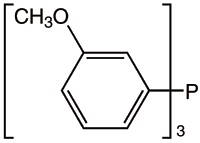
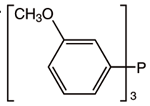
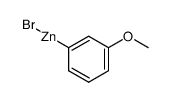

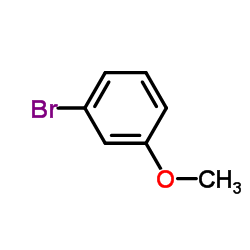
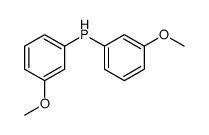





 浙公网安备 33010802013016号
浙公网安备 33010802013016号